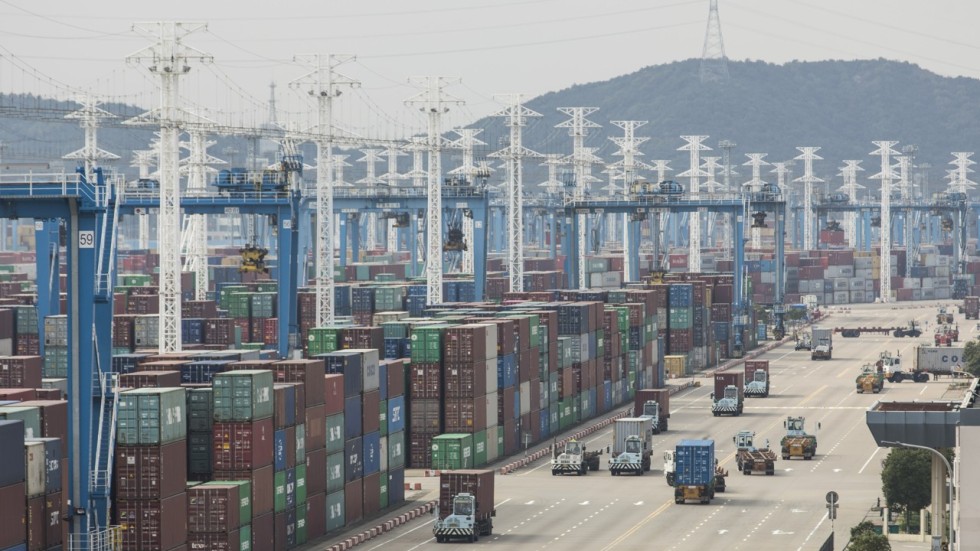Anthony Rowley
 Next up could be a fiscal war over monetary policies, as the two powers react to the economic fallout from their conflicts. If so, the size of China’s fiscal purse could give the country an advantage.
Next up could be a fiscal war over monetary policies, as the two powers react to the economic fallout from their conflicts. If so, the size of China’s fiscal purse could give the country an advantage.
Economies in Europe and elsewhere that are getting trampled by the battle of the two are in no better position to match China’s ability to use its fiscal policy as a weapon.They too could be losers in the long-term game China seems to be playing.
This of course is not the way things are being seen in Washington, or at least in Donald Trump’s camp. The US economy is in “far better shape to weather this [trade stand-off] than the Chinese are,” Trump’s Director of the National Economic Council Larry Kudlow said.
Maybe, but the Organisation of Economic Cooperation and Development (OECD) in Paris sees both the Chinese and US economies slowing at roughly the same rate over the coming two years as global conditions deteriorate, and as the growth rate of the world economy slows from a projected 3.7 per cent this year to 3.5 per cent in 2019 and 2020.
Still, Kudlow asserted that “most observers believe China to be in a slump, whereas the US is in a very strong position.”
These “observers” obviously exclude the OECD, which is projecting China’s economic growth to slow only from 6.6 per cent this year to 6.3 per cent in 2019, and 6 per cent in 2020.
This hardly amounts to an economic “slump” in China, and in any case, the OECD also said that over the same period the US economic growth rate will slow from 2.9 per cent in 2018 to 2.7 per cent in 2019 and to 2.1 per cent in 2020.
The real issue, however, is not so much about who among China, the US and others is likely to lose most from the current trade conflict, as about which of the major economic powers still has most policy leeway to respond to the increasingly likely global economic slowdown.
China gave the world a pleasant surprise after the 2008 global financial crisis with a 4 trillion yuan (US$586 billion) stimulus package that was part fiscal, and part monetary. For some, this means China has already shot its bolt, and is no longer able to repeat such bold gestures.
Yet, China’s stimulus 10 years ago was modest compared to the US$3.5 trillion expansion in the US Federal Reserve’s balance sheet since 2008, or the European Central Bank’s US$2.9 trillion, or even the Bank of England’s US$550 billion.
This may sound a bit like a “chalk and cheese” argument, given that China’s rescue package was mainly a fiscal stimulus, whereas Western economies used central bank-financed stimulus or quantitative monetary easing (QE).
But consider the impact on the global economy when the next downturn - brought not by the normal cycle, but by the trade war - adds to plunging oil and commodity prices, rising interest rates and frayed nerves in the financial markets.
This could create a need for stimulus that will make the post-2008 spending look modest. Stock and real estate values have been massively inflated by QE money that went into financial assets, and a plunge in prices would take a deep bite into the real economy.
Yet, most Western central banks will not be able to reverse course easily and turn monetary tightening back into easing, as their balance sheets are already overstretched. That means they also will not be able to issue government bonds to finance fiscal stimulus.
China, where the division between market and state is less clear than in Western economies, will not be constrained to the same extent, and fiscal stimulus (relative to GDP) will be possible on a much larger scale than elsewhere, financed by both government and the central bank.
In this regard, Trump appears to be unaware of the nature of the economic beast he is dealing with. It has a survival capacity that exceeds the norm of other market economies, where the line between private and public funds is clearly drawn.
The US leader and his key aides also need to keep in mind the changing contours of China’s economy as they continue their game plan against the world’s second-largest economy.
China’s overall dependence on exports has shrunk more than is often realised, making it less vulnerable to trade wars. China’s export- to- GDP ratio was 35 per cent in 2007, halving to 18 per cent 10 years later, reflecting a rebalancing in the economic structure in favour of domestic consumption.
But that does not mean China’s vulnerability in demand had shifted from exports to consumption. China is developing new markets across Eurasia into Europe, and from Southeast Asia into South Asia and even to the Middle East and North Africa.
This is being achieve not just by pushing aggressively (Trump-style) to open markets, but by linking them to China through networks of land and maritime infrastructure.
The Trump trade war may dent the progress of China in this regard, but it is unlikely to derail what appears to be a carefully crafted economic and geopolitical strategy with long-term ends in mind.
The US would be better off devising similar long-term strategies, than engaging in spoiling tactics.
No comments:
Post a Comment